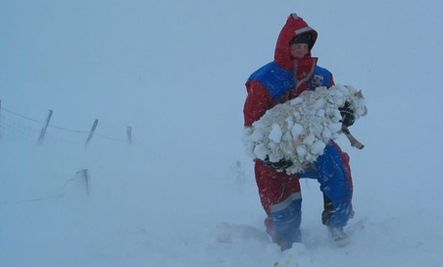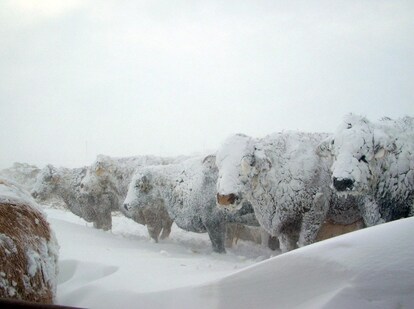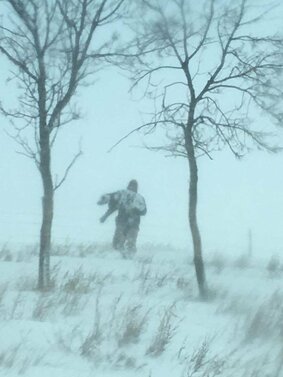The Effects of Winter on Farm and Ranch Families
Posted: 1/29/2019
By: Angel Kasper

Negative 50 degrees, oh my! Many people cringe at the thought of temperatures plummeting to negative 50 below zero in the next few days. For many farmers and ranchers, they do more than just cringe; their heart may sink at the thought of what is yet to come.
I remember the excitement that would fill me when the weatherman would say there was a blizzard on the way. The day of the blizzard I would wake up early and turn on the news channel to see if by chance school was canceled. As a kid snow days were the best! Although I didn't have to go to school, I still had to go out and take care of our livestock.
On my snow days, I would bundle up in layer upon layer to keep warm. Out the door, we went. The cold of winter would bite at your exposed skin the moment you walked out the door, but would eventually become numb as time passed. I would trail slowly behind my dad out to the barn, usually falling a few times from how deep the snow was and how short my legs were. My breath was cold and crisp in the air as it condensed on my hair, freezing it solid to my jacket.
We would start out chores by breaking the ice in our water troughs with a hammer and pulling the ice out of the water. Once we finished this we would refill the water so our animals could drink. It's important to make sure our animals are well hydrated during the winter season so they can focus on staying warm.
 In the winter my family feeds our cattle silage. Silage is chopped up corn that is compacted into airtight conditions, typically a silo or sealed bag, without first being dried. One year we decided to store our silage in a bag instead of our silo. We would have to scoop it out with our skid loader and load it into our feeder wagon. Because the silage is wet it can be prone to freezing throughout the winter, especially when temps drop below zero. Our cows weren’t able to eat the big blocks of frozen feed so we would have to break it apart manually. I still remember spending up to forty minutes in the freezing cold and snow hacking away at blocks of silage with an ax or sledgehammer to ensure it was broken up enough for our cattle to eat.
In the winter my family feeds our cattle silage. Silage is chopped up corn that is compacted into airtight conditions, typically a silo or sealed bag, without first being dried. One year we decided to store our silage in a bag instead of our silo. We would have to scoop it out with our skid loader and load it into our feeder wagon. Because the silage is wet it can be prone to freezing throughout the winter, especially when temps drop below zero. Our cows weren’t able to eat the big blocks of frozen feed so we would have to break it apart manually. I still remember spending up to forty minutes in the freezing cold and snow hacking away at blocks of silage with an ax or sledgehammer to ensure it was broken up enough for our cattle to eat.
Winter brings many struggles for farmers and ranchers. The examples above are only a few examples of how winter affected my family farm. Sub-zero temperatures and snow can bring frozen water troughs, tractors that may not start which prevents feeding our livestock, loss of power, and can even result in the death of our animals. When the temperatures drop and the snow begins to fly farmers  and ranchers are still hard at work in the below freezing, windy, and snowy weather to ensure their livestock are well taken care of. Many times we even see farmers and rancher risking their own lives in dangerous winter conditions to ensure the wellbeing of their animals.
and ranchers are still hard at work in the below freezing, windy, and snowy weather to ensure their livestock are well taken care of. Many times we even see farmers and rancher risking their own lives in dangerous winter conditions to ensure the wellbeing of their animals.
As we gear up for the snow and dropping temperatures this week, please keep in mind the farmers and ranchers, along with the police, first responders, firefighters, and other critical occupations who are still out working in dangerous winter conditions to keep our communities safe and food on our tables.
Listen to this week's Farmer's Daughter radio segment:

Comments
blog comments powered by Disqus